Apple iPhone 4S: Thoroughly Reviewed
by Anand Lal Shimpi & Brian Klug on October 31, 2011 7:45 PM EST- Posted in
- Smartphones
- Apple
- Mobile
- iPhone
- iPhone 4S
Camera Improvements
Arguably the second largest hardware change (with the A5 SoC being the first and largest) in the 4S is the inclusion of a much improved 8MP camera. In case you’ve forgotten, the iPhone 4 previously included a 5 MP camera. Back when the 4 was introduced, Apple talked for the first time about backside illumination, and pixel sizes. In a later update, the camera got even better with the ability to buffer three full size images and merge to HDR in real time. This time, Apple brought up F/# and backside illumination again, and added one more thing.
Though Apple never talked about any of their optical design for the iPhone 4 camera, to the best of my knowledge the design likely was close to reference designs reported on a few lens lists consisting of four plastic elements. For the 4S, Apple has mixed things up by including its own optical design front and center, and made special note of a five plastic element design. I’ve put together a table showing the 4 and 4S in comparison based on what information is available.
Note that many have speculated that Apple is dual sourcing the CMOS sensor which seems likely, and given the sensors out there the two most likely choices are Omnivision’s OV8830 and Sony’s IMX105. Both of these have almost identical specifications, including 1.4µm pixels, a 1/3.2“ format, and an improved backside illumination process over the previous generation wafer-scale process. Omnivision’s BSI–2 process cites some specifications that seem to line up with what Apple talked about in their presentation, including better quantum efficiency (ability to convert photons into electrons), low-light sensitivity, and larger well capacity (which translates to increased dynamic range). You’ll note that the 4S uses the same sensor format as the previous generation - 1/3.2”, and includes more pixels, which results in the pixel size going down from 1.75µm to 1.4µm.
| iPhone 4 vs. 4S Cameras | ||
| Property | iPhone 4 | iPhone 4S |
| CMOS Sensor | OV5650 | OV8830/IMX105 |
| Sensor Format | 1/3.2" (4.54 x 3.42 mm) | 1/3.2" (4.54 x 3.42 mm) |
| Optical Elements | 4 Plastic | 5 Plastic |
| Pixel Size | 1.75 µm | 1.4 µm |
| Focal Length | 3.85 mm | 4.28 mm |
| Aperture | F/2.8 | F/2.4 |
| Image Capture Size | 2592 x 1936 (5 MP) | 3264 x 2448 (8 MP) |
| Average File Size | ~2.03 MB (AVG) | ~2.77 MB (AVG) |
Everybody likes talking about sensors (and I see lots of attention given to them), but any good photographer knows that it’s a combination of optical system and sensor that matters to performance. Optical design is important, and having studied as an optical engineer I find it interesting that Apple would draw attention to having a custom design of their very own with an additional plastic element. For a while I’ve held off on really talking about smartphone camera optics, but while we’re here, let’s touch briefly on them.
Thus far this generation and the one before it have primarily used 4 plastic elements, and virtually everyone but Nokia uses nothing but plastic (Nokia famously uses Zeiss-branded designs, often with glass elements). Optical design is generally driven by material availability, and there are only a few optical grade (read: transmissive in the visible) thermoplastics out there - Styrene, Polystyrene, ZEONEX, PMMA (Acrylic) and so forth - the list is actually relatively short. Thankfully polystyrene and PMMA can be used to make something of an achromatic pair, with polystyrene as a flint, and PMMA as something of a crown. Plastic provides unique constraints as well though - coatings don’t stick well, not very many have great optical properties, they have a high coefficient of thermal expansion, high index variation with temperature (which oddly decreases with increasing temperature), and less heat resistance or durability among others. With all those downsides you might wonder why smartphone vendors use plastic, and that reason is simple - they’re cheap, but more importantly, they can be molded into complicated shapes. Those complicated shapes are aspheres, which are difficult to fabricate out of glass, and afford much finer control over aberrations using fewer elements, which is an absolute necessity when working with very little package depth.
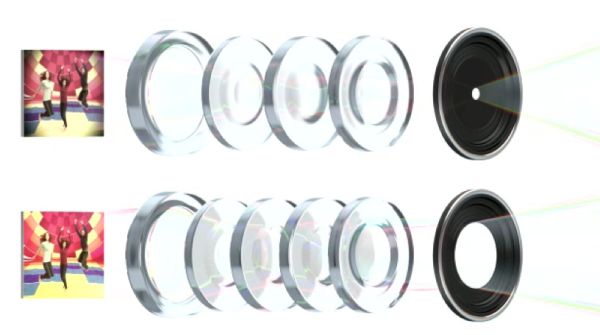 Apple's 4S versus 4 infographic
Apple's 4S versus 4 infographic
So what does adding another element get you? Well, when you’ve faced with limited material choices, adding more surfaces gives you another opportunity to balance aberrations that start blowing up rapidly as you increase F/#. That said, there are tradeoffs as well to adding surfaces - more back reflections, increased cost, and a thicker system. In the keynote, Apple notes that sharpness is improved by 30% in their new 5 element design, and MTF is what they’re undoubtably alluding to.
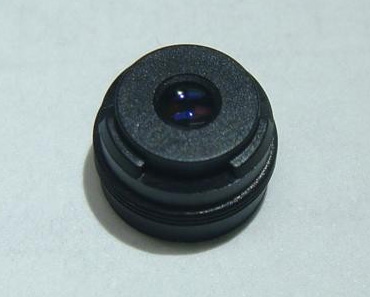
Genius electronic optical - 5P lens. Compare to above.
Genius electronic optical has a page on their website with a lens system that seems likely to be what’s in the 4S, as the specifications include 8 MP resolution (same size), same sensor format, F/# (2.4), 5 plastic elements (5P) and looks basically like what’s in the 4S. Other than that, however, there’s not much more that I can say about this Apple specific design without destructively taking things apart. One thing is for certain however, and it’s that Apple is getting serious about camera performance, something that other handset vendors like HTC (with its F/2.2 systems) are also doing.
Apple made mention that it also included an IR filter in the 4S optical design. If you recall back to our Kinect story, I used the 4 camera to photograph the IR laser structured light projector that Kinect uses to build a 3D picture. The 4 no doubt has an IR filter (though not a great one), but it’s probably just a thin film rather than a discrete filter right before the sensor. The 4S includes what Apple has deemed a ‘hybrid IR filter’ right on top of the sensor, which is possibly just a combination of UV/IR CUT filter (UV is a problem too), and an anti-aliasing filter.
If you try and take the same Kinect (IR source) picture with the 4S, thankfully all those non-visible, IR wavelength photons get rejected by the filter. This doesn’t sound like much until you realize that silicon is transparent in the IR and will bounce around off the metal structures inside a CMOS or CCD and create lovely diffraction effects on fancy sensors. I digress though since that’s probably not what Apple was trying to combat here. On a larger scale, IR will generally just cause undesirably incorrect color representation, and thus people stick an IR filter either in the lens somewhere or before the sensor, which is what has been done in the 4S. The thin film IR filters that smartphones have used in the past also are largely to blame for some of the color nonuniformity and color spot (magenta/green circle) issues that people have started taking note of. With these thin film IR filters, rays incident on the filter at an angle (as we move across the field) change the frequency response of the filter and the result is that infamous circular color nonuniformity. I wager the other effect is some weird combination of vignetting and the microlens array on the CMOS, but when I saw Apple make note of their improved IR filter my thoughts immediately raced to this ‘hybrid IR filter’ as being their logical cure for the infamous green circle the iPhone 4 exhibits.
Another minor difference on the 4S is that the LED flash is improved. The previous LED flash had a distinctively yellow-green hue, the LED flash on the 4S seems slightly brighter and also has a temperature that’s subjectively much closer to daylight, though I didn’t measure it directly. I habitually avoided using LED illumination on the 4 and will probably continue to do so on the 4S (and use HDR instead), but it does bear noting that the LED characteristics are improved. Unfortunately the diffuser and illumination pattern still isn’t very uniform or wide. It also seems that all this talk of moving the LED flash to the other side of the device to combat red eye turned out wrong as well.


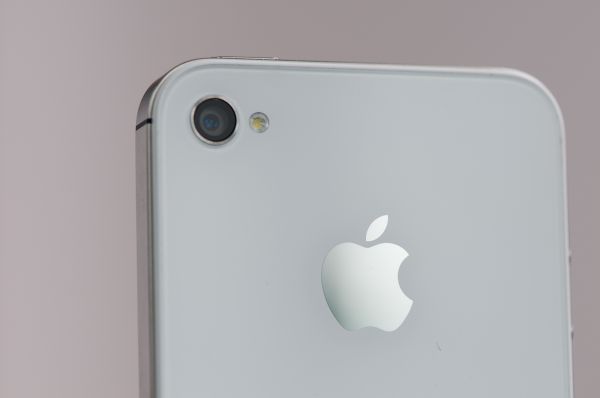
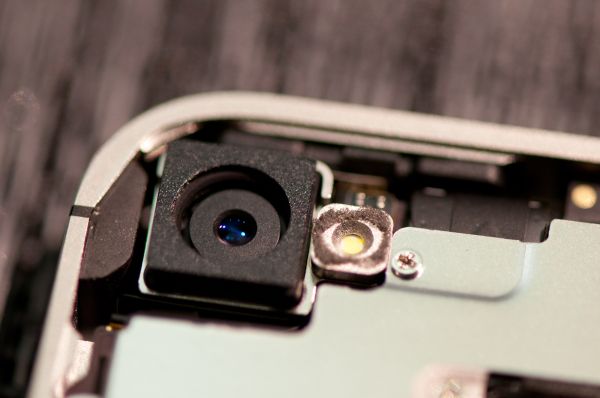
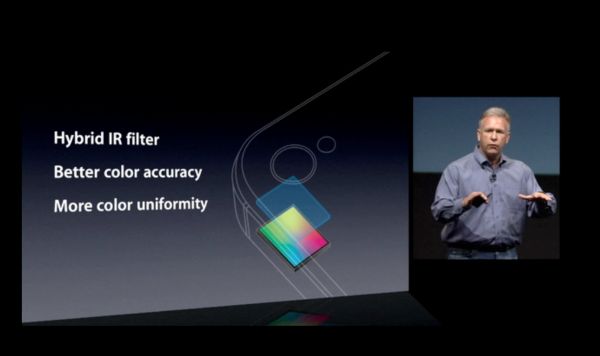








199 Comments
View All Comments
doobydoo - Friday, December 2, 2011 - link
Hardware wise, the difference between the iPhone 4S CPU/GPU combination and Android competitors, is huge.If you want the best performance, I don't see any other way to turn.
As for the software, I like most users would happily use Android or iOS - they've largely converged anyway.
name99 - Friday, November 4, 2011 - link
"If you had a 4 already your just a "moop" if you upgraded to one of these!"OK, so most US customers on on a 2yr plan. Upgrading for them is impractical, if for no other reason then for carrier reasons. And then you are COMPLAINING that Apple produced an upgrade that (in your eyes) gives them no reason to upgrade???
What exactly is your problem? You're like someone who goes to a restaurant and complains "the food sucks --- and the portions are too small".
dennykins - Tuesday, November 1, 2011 - link
Hey! I have that "Introduction to Modern Optics" book too! Pretty old, but still relevantname99 - Tuesday, November 1, 2011 - link
"It is admittedly curious that Apple hasn’t decided to make some other larger change to distinguish the 4S from the other two"There was, of course, also precious little visual change between iPhone, iPhone3G and iPhone 3GS. Likewise for plenty of other upgrades across the Apple line in the last ten years. I don't know why Anand thinks it's strange. For YEARS Apple has made the point that you buy an iMac --- and you get the what Apple thinks an iMac should be today. You don't buy an iMac XV371. You don't buy an iMac 7. You don't buy an iMac 20011. You buy an iMac --- which may or may not look like its predecessor, which may or may not have last been updated three, six or
nine months ago.
It's obvious that Apple wants to bring that same mindset to phones (and iPads). Screwing with people's expectations of an update in July was simply the first step in breaking the mindset of a particular schedule for upgrades. Of course there are issues that make it more difficult to do this cleanly, for example carrier involvement and the ridiculous subsidized pricing model --- which means that Apple has reason, at least for now, to keep older models around. But there are obvious advantages to Apple in switching to this model, including
- not being forced to release SW too soon. I think we'd all agree iOS5 was released under pressure, and that iOS 5.1 will be the release 5.0 should have been.
- Apple's been able to ignore pressure from a stream of constant Android updates for the past two years, but at some point annual upgrades may just be too slow. At that point it would be nice to have the option of minor upgrades (cf the recent PowerBook Pro upgrades), say boosting the CPU from 800 MHz to 1GHz, without it being a big deal --- something to shut up the crowd that looks at specs, while being ignored by the mass audience that does not care about specs and doesn't want Apple talking about them.
Not that this will stop haters from claiming that "people buy iPhones for fashion"....
KPOM - Tuesday, November 1, 2011 - link
Good observation about the upgrades. Yes, it's entirely possible we'll see minor spec bumps as the iPhone has become a staple of Apple's product line. We don't notice all the the upgrades in the Android world (how many people know or even care about the differences between the Galaxy S, Galaxy S II, and Galaxy S II Skyrocket ?), partly because they happen all the time.Also, Apple has never been a company to change the design simply for the sake of change. They tweak a design until they "get it right," but then stick with it a while. This year's MacBook Air, for instance, is a big update from last year's (Core i5/i7, backlit keyboard, 4GB RAM standard on most models), but they didn't change the external design. It's still selling extremely well and received good reviews. I think it's the same with the iPhone. The 4S has some significant improvements, from the faster processor, better camera, and better antenna.
name99 - Tuesday, November 1, 2011 - link
I'm glad you guys adopted my suggestion to report how snappy a phone feels, based not only on CPU benchmarks but also on the speed of flash, and things like the launch time of apps.In the spirit of constant complaint that is the web, can I now ask that you continue to do this for all future phones, not just iOS devices.
Yes, you have fanboi readers who care only about how wonderful their platform is; but you do also have a number of honest readers who are genuinely interested in things like how the speed of flash (including the speed of SD flash) varies across devices, and how launch times (for comparable apps) vary --- which, of course, depends on both HW and also SW/OS decisions.
Drasca - Tuesday, November 1, 2011 - link
There's a small typo that I'm surprised no one else has caught. Perhaps I am the only one that cares enough about this particular subject enough to. On the last page, 4th to last paragraph, we see:"we’ll hopefully see the technology mature into something more like what years of science fiction moves have promised us."
I believe you mean movies here.
I caught it in particular because I've been discussing amongst my friends how modern technology is the future promise of older science fiction. Oh gosh gee wiz, we have instant mobile communication across the globe, including video! We talk into our portable devices and they think for us. These devices are an extension of ourselves. In a way, we've become like the borg in that we're connected to community at large. Facebook is a form of hive mind group consciousness. Heck, we can track each other near-instantaneously and some folk are vividly aware of each other's locations.
These are interesting times, and what has only previously been explored as supposition has become reality.
I still want my flying cars and teleporters. Also, Holodecks and the AI behind it. Plus, the bridge of the starship enterprise D with its big comfy captain's chair and massive screen.
anishannayya - Wednesday, November 2, 2011 - link
If you want an iPhone, you really don't have a choice. Either you get the 4S or go find an Android phone.shashank7040 - Wednesday, November 2, 2011 - link
Asus Eee Pad being the first tablet With Slide out QWERTY........http://goo.gl/B4rJUthevibenow - Wednesday, November 2, 2011 - link
Check out our review of the Iphone 4shttp://www.youtube.com/watch?v=35v1kkaPM9s